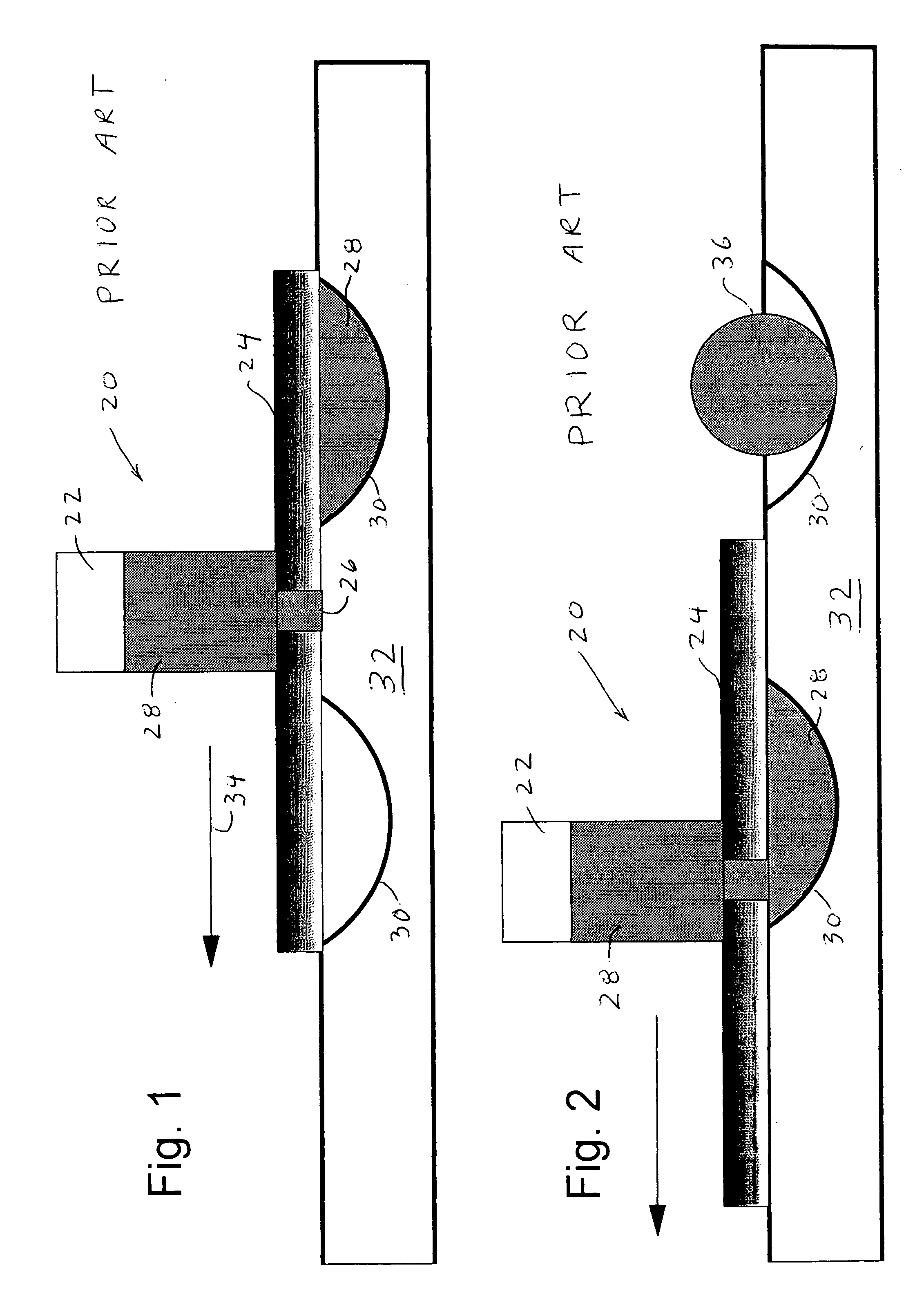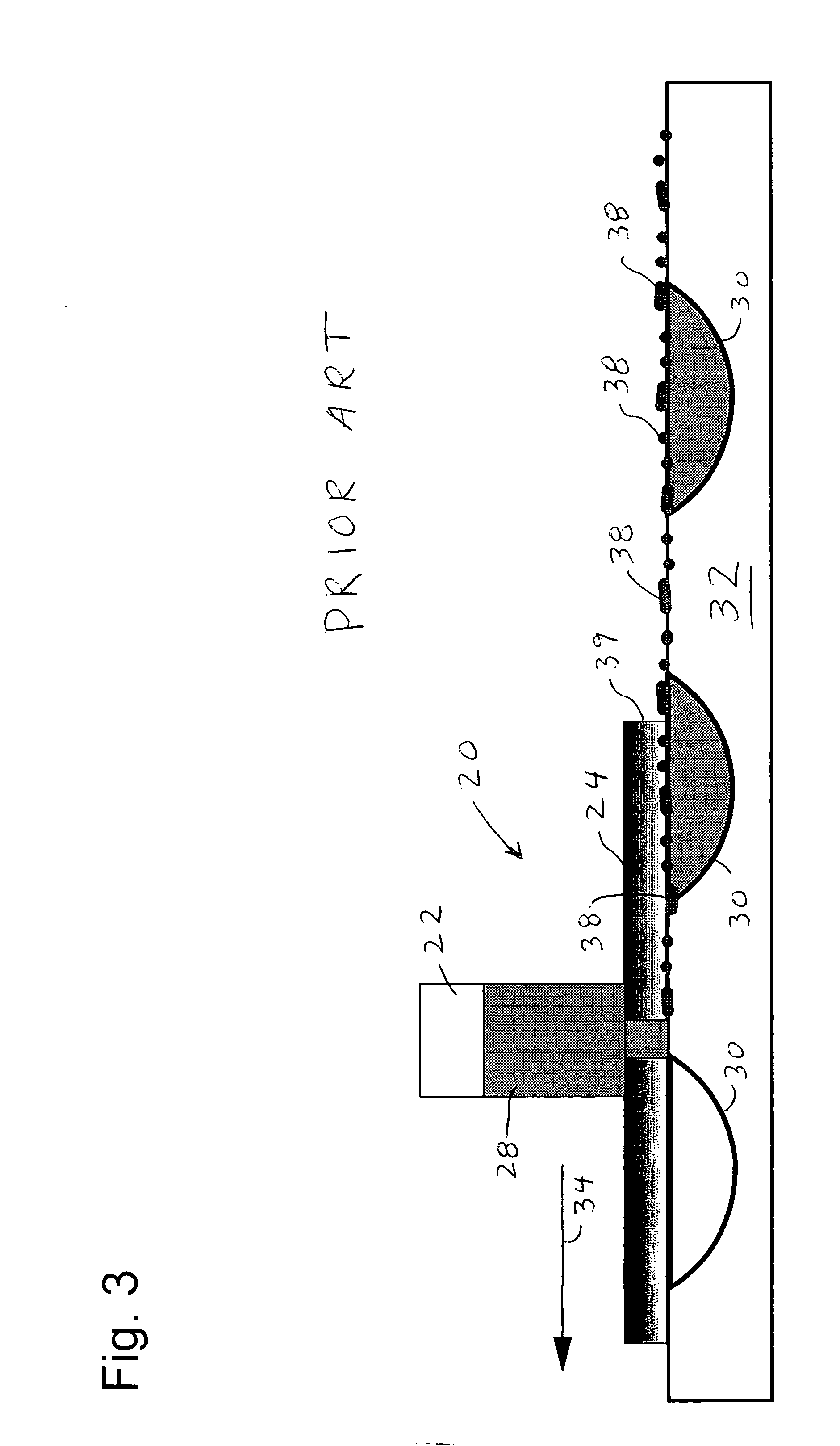Injection molded continuously solidified solder method and apparatus
a technology of injection molding and solidification solder, which is applied in the direction of welding/cutting media/materials, manufacturing tools, and solventing apparatus, etc., can solve the problems of inability to meet the requirements of process operation, inability to accurately deposition solder, and high cost of process and maintenance steps. achieve the effect of accurate deposition of solder
- Summary
- Abstract
- Description
- Claims
- Application Information
AI Technical Summary
Benefits of technology
Problems solved by technology
Method used
Image
Examples
Embodiment Construction
[0046] Variations described for the present invention can be realized in any combination desirable for each particular application. Thus particular limitations, and / or embodiment enhancements described herein, which may have particular advantages to the particular application need not be used for all applications. Also, it should be realized that not all limitations need be implemented in methods, systems and / or apparatus including one or more concepts of the present invention.
[0047] Referring to FIG. 5, a key feature of this invention is an IMS head 50 with a generally longer die or contact plate 52 which includes a cooling zone 54 after the hot solder injection zone 56. The solder 28, from reservoir 51, solidifies across each cavity in the mold plate 32 in the direction of the scan, as represented by arrow 34, and by solidified solder 28A and still molten solder 28B, with the solidification taking place as molten solder comes into contact with cooling zone 54 of contact plate 52....
PUM
| Property | Measurement | Unit |
|---|---|---|
| width | aaaaa | aaaaa |
| width | aaaaa | aaaaa |
| width | aaaaa | aaaaa |
Abstract
Description
Claims
Application Information
 Login to View More
Login to View More - R&D
- Intellectual Property
- Life Sciences
- Materials
- Tech Scout
- Unparalleled Data Quality
- Higher Quality Content
- 60% Fewer Hallucinations
Browse by: Latest US Patents, China's latest patents, Technical Efficacy Thesaurus, Application Domain, Technology Topic, Popular Technical Reports.
© 2025 PatSnap. All rights reserved.Legal|Privacy policy|Modern Slavery Act Transparency Statement|Sitemap|About US| Contact US: help@patsnap.com



